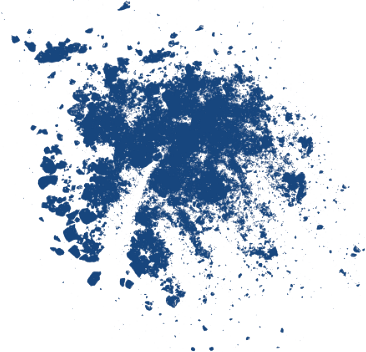By 2050 nearly 70% of the global population will live in urban areas, with the greatest growth occurring in small and medium-sized cities.
This escalating densification presents significant social and environmental challenges – that’s if we fail to rethink development. Eminent researchers have devoted the past ten years to creating the sustainable urban development blueprint, Greening the Greyfields, detailing what’s required from designers, planners, developers, businesspeople, citizens, and local and state governments.
To learn more about this research, we chatted to our Director, Simon Merrigan and Greening the Greyfields researcher and Senior Research Fellow in the Centre for Urban Transitions at Swinburne University, Dr Stephen Glackin.
Medium-density redevelopment is key to a more sustainable Melbourne
Melbourne is set to become Australia’s fastest-growing capital city with its population expected to increase by almost 80% by 2040.
With growth comes the need for more housing, and Melbourne must meet this demand by pivoting away from its proclivity towards low-density dwellings.
“Melbourne’s suburbs were developed at a relatively low density. However, redeveloping at a higher density – when combined with other crucial factors – is a more sustainable alternative to low-density housing delivered at the outskirts of the city,” says Simon.
Stephen agrees, stating that typically, cities have managed growth through low-density urban development on the fridge of built-up areas. The sweet spot, according to Stephen and as presented in Greening the Greyfields, is ‘Greyfield precinct regeneration’ (GPR), which refers to building regenerative, precinct-scale, medium-density development in the ‘Greyfields’.
“GPR has been the missing class of the planning model. We need to realise the United Nations Sustainable Development Goal 11 of ‘inclusive, safe, resilient and sustainable’ urban development. And GPR is one of the ways to get there,” says Stephen.
Embedded within GPR is the capability to deliver more integrated land use and transport planning that meets key social, environmental and economic goals. This makes GPR an appealing model for reimagining twenty-first-century cities.
The key is to engage community early
A major challenge to higher density development is opposition from a disgruntled community. The antidote to this? Engaging local community representatives in the early stages of the development process.
“Community members will typically resist any kind of change. That’s why getting the community on board first is a critical part of our methodology to building more sustainable cities,” says Stephen.
“If you’re going to build a reasonably sized development, you can spend time consulting and giving back to the community. You can ask them what the area needs to make the project worthwhile.”
The outcome of this might be more green spaces, flood mitigation systems, new walking paths, new services, off-site parking, tree protection or community renewable-energy schemes. A great example of a community renewable-energy scheme is the pioneering sustainable housing project in Freemantle, White Gum Valley).
As Stephen says, “People think development reduces land value. But it’s actually the opposite. And a major part of dispelling this myth is inviting the locals into the conversation – and shifting the focus to value creation.”
“Interestingly, a major finding from the research is that if you get designs upfront with the community, and do community engagement, you can remove third-party complaints.”
On top of decreasing community opposition, the researchers also found that strong community engagement increases a sense of belonging and civic pride, while enhancing the quality of urban planning projects.
To create change, change the law (and then make it a business)
What can we learn from Greening the Greyfields?
After ten years of rigorous research, Stephen’s major takeaway is the importance of legal reform to create significant and enduring
impact.
“If there’s no law, nothing changes,” says Stephen, “No matter what the community or developer wants, a law must exist somewhere. That’s why I’m now focusing my energy on teaching architects the law, so they understand the legislative systems of the city, so their plans eventualise – and don’t just end up on paper.”
Yet as Stephen notes, change can’t merely be structural; it must be a top-down, state-led planning policy backed by funding, a supportive community and willing developers.
“The success of executing this project won’t just rest on design. It’s about finance, law, community engagement and politics. You have to engage in a slow process of bringing all the different stakeholders together and socialising them… that’s the biggest learning I have,” says Stephen.
Simon agrees, stating that “the success of this project will require the collaboration of various departments across Council.”
“Importantly, the research also recognises the valuable role of developers in the planning process. For developers, this opportunity to contribute early on and have greater certainty on the final outcome is like gold.”
The law encapsulating the Greening the Greyfields model, which is a planning amendment for two areas, is now sitting with the Minister for Planning, the Hon. Richard Wynn, for approval. The amendment establishes a Development Plan Overlay and a Development Plan Contribution Scheme, while also providing for higher densities if land is amalgamated and the plan is followed.
The next phase once the law has passed? Turning it into a business plan.
“We’ve spent so long creating the law. Once that’s finalised, we need to get developers, landowners and Council working together to execute this model,” says Stephen.
In the coming months, Stephen will send out expressions of interest to developers who want to get on board. There is a strong intention to redefine urban development. The next step is converting this intention into a reality – that benefits people, planet and profitability.
If you’re interested in bringing this law to life, get in touch with Stephen. The Greening the Greyfields researchers are also looking for commercial partners, developers and financiers to co-fund an Australian Research Council linkage project exploring how industry and councils can work together towards sustainable urban development.
Or, to learn more about a more sustainable future for property, talk to our experts today.




